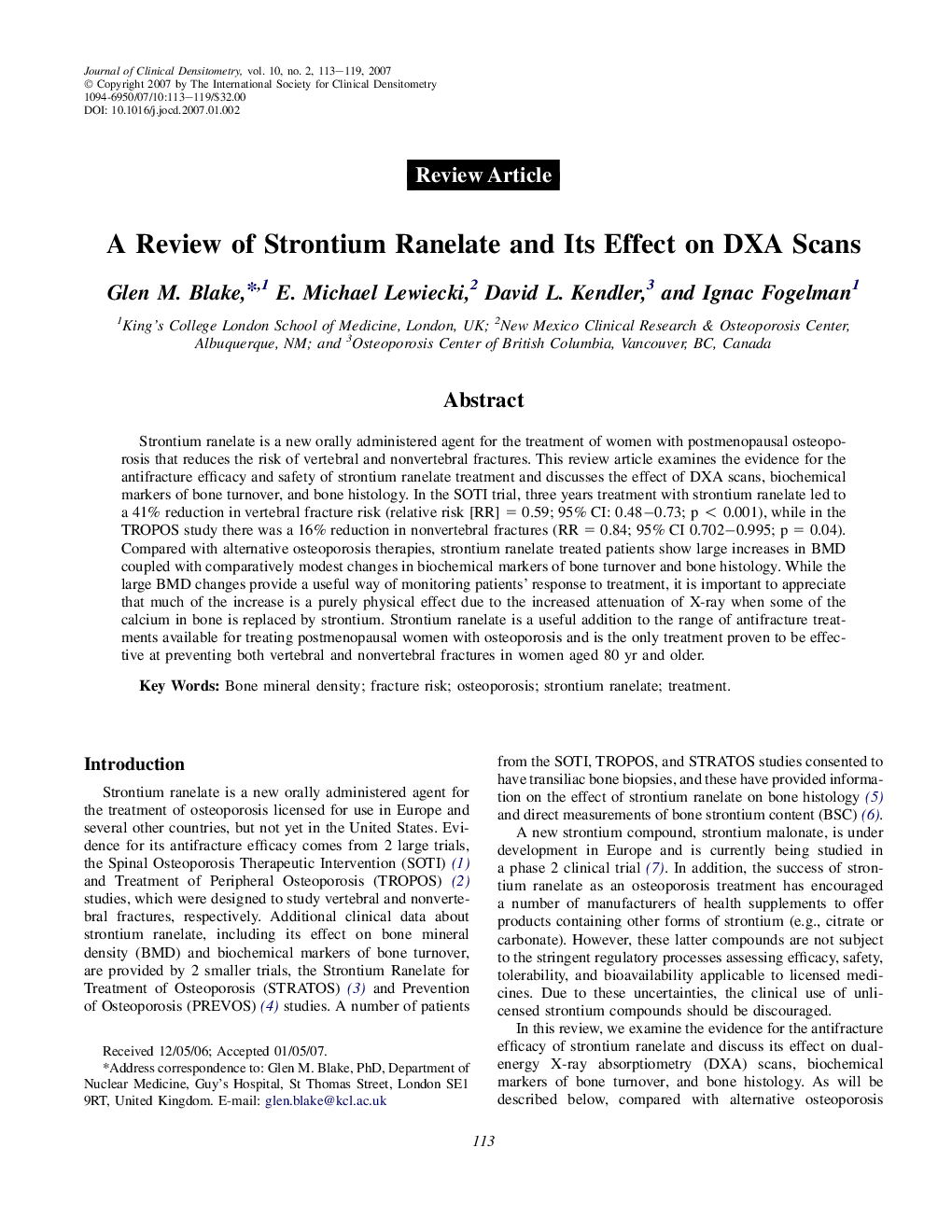| Article ID | Journal | Published Year | Pages | File Type |
|---|---|---|---|---|
| 3271719 | Journal of Clinical Densitometry | 2007 | 7 Pages |
Abstract
Strontium ranelate is a new orally administered agent for the treatment of women with postmenopausal osteoporosis that reduces the risk of vertebral and nonvertebral fractures. This review article examines the evidence for the antifracture efficacy and safety of strontium ranelate treatment and discusses the effect of DXA scans, biochemical markers of bone turnover, and bone histology. In the SOTI trial, three years treatment with strontium ranelate led to a 41% reduction in vertebral fracture risk (relative risk [RR] = 0.59; 95% CI: 0.48â0.73; p < 0.001), while in the TROPOS study there was a 16% reduction in nonvertebral fractures (RR = 0.84; 95% CI 0.702â0.995; p = 0.04). Compared with alternative osteoporosis therapies, strontium ranelate treated patients show large increases in BMD coupled with comparatively modest changes in biochemical markers of bone turnover and bone histology. While the large BMD changes provide a useful way of monitoring patients' response to treatment, it is important to appreciate that much of the increase is a purely physical effect due to the increased attenuation of X-ray when some of the calcium in bone is replaced by strontium. Strontium ranelate is a useful addition to the range of antifracture treatments available for treating postmenopausal women with osteoporosis and is the only treatment proven to be effective at preventing both vertebral and nonvertebral fractures in women aged 80 yr and older.
Related Topics
Health Sciences
Medicine and Dentistry
Endocrinology, Diabetes and Metabolism
Authors
Glen M. Blake, E. Michael Lewiecki, David L. Kendler, Ignac Fogelman,
